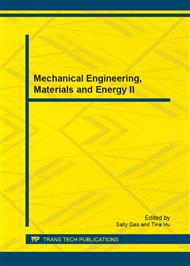p.624
p.630
p.634
p.639
p.645
p.649
p.653
p.658
p.664
Curing Strength Monitoring of Early-Age Concrete Based on Velocity of Guided Wave Using Embedded Plate-Type PZT Sensor Module
Abstract:
In this study, a guided wave based nondestructive curing strength monitoring method is proposed to monitor the curing strength of the early-age concrete. This approach used the embedded steel plate-type PZT sensor module which was fabricated by bonding the two pieces of piezoelectric sensor to a steel plate. The steel plate provided the constant path for guided wave propagation and it protected the piezoelectric sensors from impacts and environmental variations. To measure the guided wave signals from the early-age concrete, fabricated sensor modules were landfilled at the same time with concrete placement.While the concrete was curing, guided wave signals were measured by pitch-catch method continuously at regular intervals. Wavelet transform process was performed to improve the quality of the signal by removing the signal’s noise of undesired frequencies. The TOF (Time of flight) of guidedwave was extract from de-noised signal using peak tracing algorithm to calculate the velocity of wave. The calculated wave velocity hysteresis according to the curing time was traced to analysis the pattern of variations of wave velocity. Finally, specific equations to estimate the strength of the concrete were derived using regression analysis based on the wave velocity and compressive strength from destructive compressive strength test.
Info:
Periodical:
Pages:
645-648
Citation:
Online since:
January 2013
Authors:
Price:
Сopyright:
© 2013 Trans Tech Publications Ltd. All Rights Reserved
Share:
Citation:


